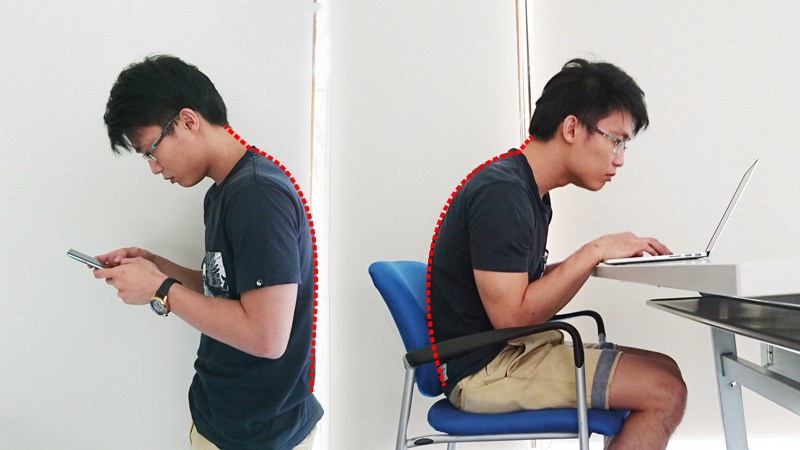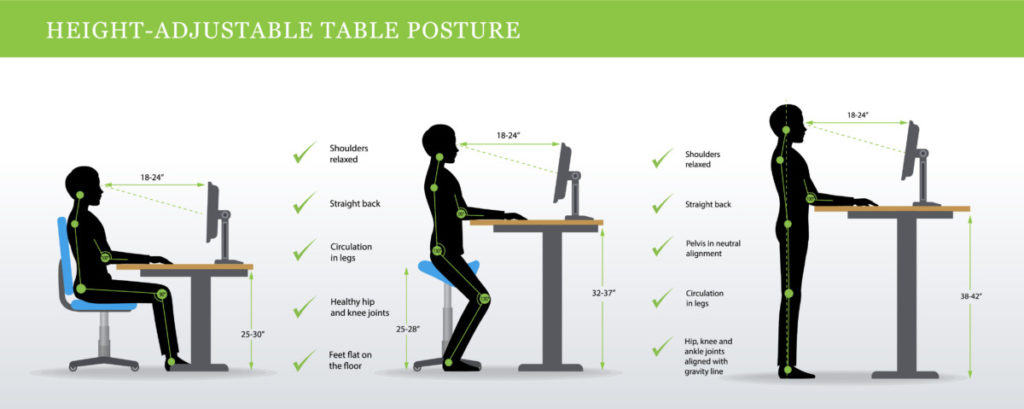
By Dr. Kathy Uy, PT, DPT, CFMT, OCS
As the COVID-19 pandemic rages on, so does our neck and back pain. Proper office ergonomics — including correct chair height, adequate equipment spacing and good desk posture — can make working from home more comfortable. Here are some tips to make your home work space work for you.
Start by creating a designated work space and then make modifications to support good posture.
Seating: Whether you are working at a desk or kitchen table, sitting in a chair with a straight back helps you avoid slumping and provides needed support to your back and neck. Adjust the chair height so your knees are about level with your hips.
Make sure you can sit back in your chair with your feet resting on the floor. If the chair is too deep, you can place a pillow or firm cushion behind you. If the chair is too high, place a book or footstool under your feet.
Proper arm support decreases pressure on your neck and the load on your back. If your chair has arm rests, keep your elbows close to your body with a 90 to 120 degree bend. If you use an armless chair, tuck a pillow into your lap to support your elbows
As you work, check periodically to ensure you’re sitting back in your chair with shoulders dropped , rolled back and relaxed.
Computer monitor: Check the height and distance of your monitor. Placing the monitor an arm’s length away with the top of the screen at eye level prevents craning, squinting, slouching along with decreasing eye and muscle strain. Sturdy books , a ream of paper, a monitor riser or adjustable laptop stand all are good options to help you hit the ideal height. Try tilting the screen to find the optimal angle for easy reading. Consider a desk lamp to reduce glare.
Keyboard and mouse: When using the keyboard and mouse, keep your wrists straight and your hands at or below elbow level. If you are using a laptop, once the monitor is at eye level, the keyboard will be too high and an external keyboard is necessary to prevent wrist pain. The external keyboard should be placed within easy reach on the desk as close to you as possible.
Cell phones: The stress in your neck muscles caused by repeatedly tilting your head to hold your phone can cause neck pain or spasm. Prop your phone up in front of you on a stand or against something sturdy and use the speaker function, if possible. If privacy is needed, earbuds with a microphone or a wireless bluetooth headset leave you hand’s free to multitask while maintaining good posture.

Finally, structure breaks from your work area and move around. A recent study reported that 37% of remote workers stayed productive by taking short breaks during their work day. Keep your muscles loose and joints less stiff by standing up or walking about every 30-45 minutes. Give your eyes a rest by looking away from your computer and focusing on a distant object multiple times throughout the day.
When you cannot leave your desk, take a few deep breaths and perform simple stretches. Your eyes and body will thank you.
If you have any questions or would like to connect to make an appointment, please click on the button below!




You must be logged in to post a comment.